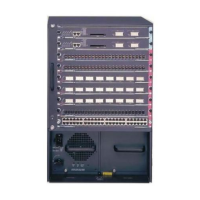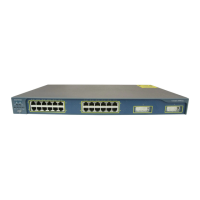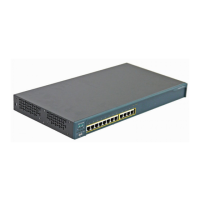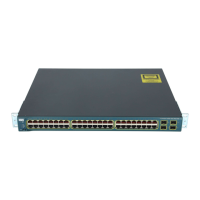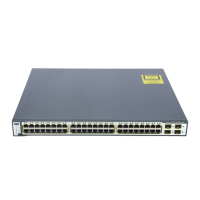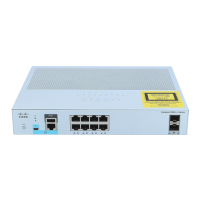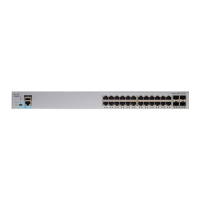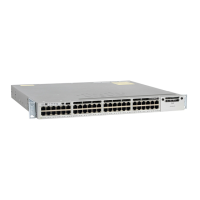51-7
Catalyst 6500 Series Switch Software Configuration Guide—Release 8.7
OL-8978-04
Chapter 51 Configuring Multicast Services
Understanding How Multicasting Works
Suppressing Multicast Traffic
On the Gigabit Ethernet ports, you can limit the amount of bandwidth to be used for the multicast traffic.
Enter the set port broadcast command to specify a percentage of the total bandwidth to be used for the
multicast traffic on the Gigabit Ethernet ports.
Rate-Limiting RPF Failure Traffic
In a redundant configuration where multiple routers connect to the same LAN segment, only one router
forwards the multicast traffic from the source to the receivers on the outgoing interfaces. In this
topology, only the Protocol Independent Multicast-designated forwarder (PIM-DF) forwards the data in
the common VLAN, and the non-PIM-DF receives the forwarded multicast traffic. The redundant router
(non-PIM-DF) must drop this traffic because it has arrived on the wrong interface and will fail the
reverse path forwarding (RPF) check. The traffic that fails the RPF check is called the non-RPF traffic.
According to the multicast protocol specification, the router needs to receive the non-RPF packets for
the PIM assert mechanism to function properly, so that all non-RPF packets cannot be dropped in the
hardware.
PFC3A has enhanced hardware support for non-RPF packet rate limiting. On receiving a non-RPF
packet, PFC3A creates a non-RPF entry (which contains source, group, and ingress interface
information) in the NetFlow table, if there is no matching entry already present, and then bridges the
non-RPF packet on the incoming VLAN and to MSFC3. The non-RPF packets that already have a
matching NetFlow entry are only bridged on the incoming VLAN and are not sent to MSFC3.
The non-RPF entries in the NetFlow table are periodically aged out so that the non-RPF packets are
leaked to MSFC3 for the PIM assert mechanism to function properly.
Rate limiting of RPF failures is enabled by default.
Table 51-1 RGMP Message Types
Description Action
Hello When RGMP is enabled on the router, no multicast data traffic is sent to the router
by the switch unless an RGMP join is specifically sent for a group.
Bye When RGMP is disabled on the router, all multicast data traffic is sent to the router
by the switch.
Join Multicast data traffic for a multicast MAC address from the Layer 3 group address G
is sent to the router. These packets have group G in the Group Address field of the
RGMP packet.
Leave Multicast data traffic for the group G is not sent to the router. These packets have
group G in the group address field of the RGMP packet.
